The Electricity Was Not Only in the Air
Every August all eyes turn to Monterey and Pebble Beach Week to celebrate and view the most exquisite automobiles from all over the globe. Nowhere else on earth can such an excellent collection of cars from every year and marque be seen. In the last few years, Pebble Beach has also become the favorite place for automakers to show off their latest work in electrified cars. What started off as a trickle a few years ago has become a torrent of a new EVs, new manufacturers and new technologies. Clean Fleet Report was there the entire week, and here are the new BEVs and PHEVs we found at Pebble Beach EV Week.
Audi
Audi introduced a new all-electric BEV supercar concept named the Audi PB 18 E-tron, which gives us hints at the next iteration of their current Audi R8 supercar.
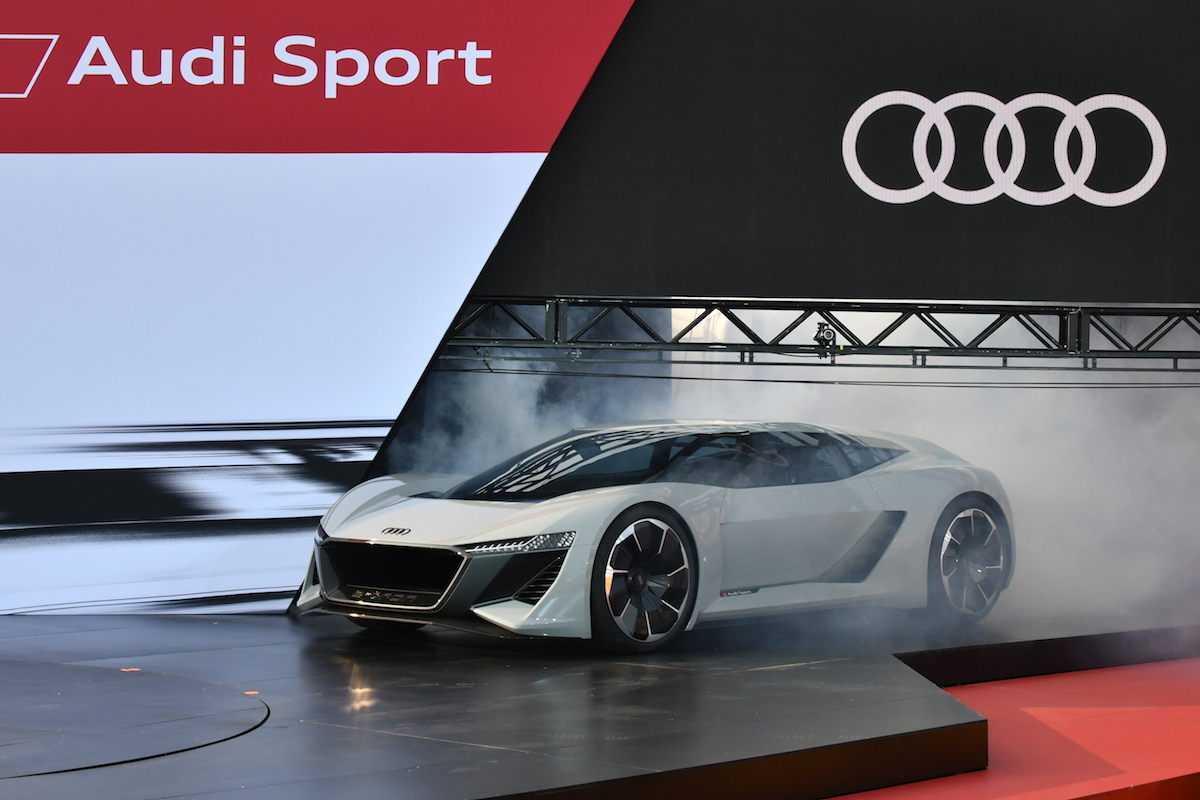
The PB-18 presents Audi’s vision of a pure electric supercar that is comfortable on both a city street and on a race track. The body is a mix of aluminum-carbon and multi-material composites that ensures a lightweight, high-strength structure. Powered by three electric motors, one driving the front wheels and two in the rear resulting in Quattro mode. This combination provides up to 612 pound-feet (lb.-ft.) of torque that can provide 0-60 mph times of under 2 seconds, an acceleration that is only slightly slower than Audi’s LMP1 race cars.
Power is supplied by an onboard 95 kWh liquid-cooled solid-state battery that on a full charge gives the car a range of 310 miles. Charging is compatible with 800-volt DCFC SAE chargers. Fully recharging the PB18 takes only about 15 minutes.
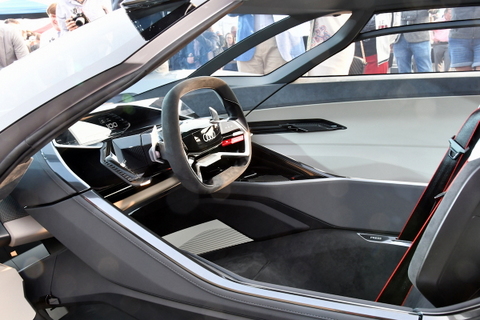
The interior of the PB-18 is unique in that while it is a two-seat vehicle, the passenger seat folds away, and the driver’s seat, controls, and instruments can be moved to the center of the car, giving the driver command of the vehicle in a race seating arrangement.
Despite its racing capabilities, the PB-18 can act like a two-seat GT with a generous 16.6 cubic feet of cargo space and plenty of range. If the PB-18 concept makes it into production, look for it in the 2020 timeframe as a replacement for the ICE powered Audi R8 supercar. Expect more news from Audi about its electric vehicle intentions with the September 17th world introduction of the Audi E-tron SUV, Audi’s first pure BEV vehicle.
Bentley
The Bentley Bentayga SUV now has a plug-in hybrid version. In the last three years, this bespoke SUV has established itself as the pinnacle of luxury in an SUV, and the introduction of the hybrid version keeps in at that forefront. The Bentayga’s PHEV version powertrain is identical to the Porsche Cayenne E-Hybrid, which shares its platform with the Bentayga. A V-6 drives the front and rear wheels coupled with a 134-horsepower (hp) electric motor driving the rear wheels providing a total of 455-hp and 516 lb.-ft. of torque. A 14.1 kWh battery gives the Bentayga about 20 miles of pure electric range. Look for the Bentayga E-Hybrid to be available in spring of 2019.
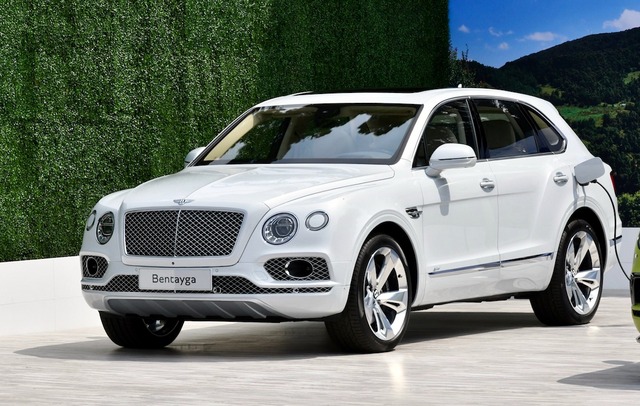
Byton
A newcomer to the BEV space, Byton is a well-funded Chinese premium vehicle brand. With design, R&D and manufacturing facilities in Nanjing, China; Munich, Germany; and Silicon Valley, Byton is aspiring to build the next generation of intelligent electric vehicles.
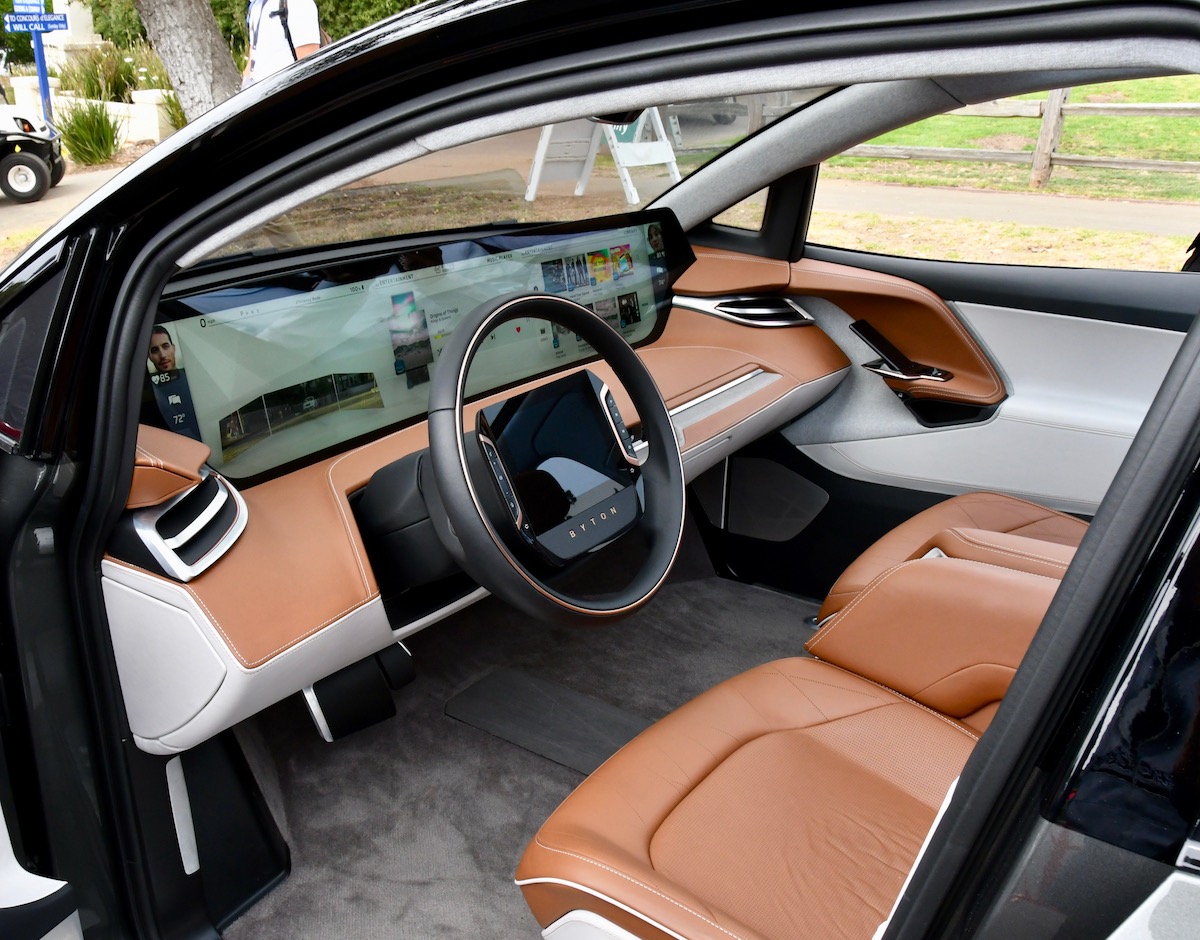
At Pebble Beach, Byton displayed the first two vehicles its pipeline. The M-Byte, an all-electric SUV, is the furthest along with pre-production test vehicles on public roads in China, the U.S. and Europe. The M-Byte promises to be a truly connected vehicle with a massive wall-to-wall front screen, Level 3 autonomous services, a 325-mile range and high-speed DCFC charging.
Byton also gave a glimpse of its second vehicle, the K-Byte, a four-door all-electric sedan with a $45,000 price tag. The K-Byte aims to take Level 4 autonomous services to production reality. Level 4 is defined as the state where the car can operate without human input or oversight, but only under specific conditions. Byton has a goal of 2020 for delivery of this BEV.
Both the M-Byte and K-Byte will come in either two-wheel drive with a 71 kWh battery and 272-hp electric motor, or an all-wheel-drive performance model with a 95 kWh battery and dual motors totaling 476 hp. Expected ranges for the two versions is about 200 and 260 EPA-measured miles.
Genovation
While not a household name, Genovation is a bespoken BEV manufacturer based in Rockville, Maryland. Starting with a C6 Corvette Grand Sport, Genovation removes
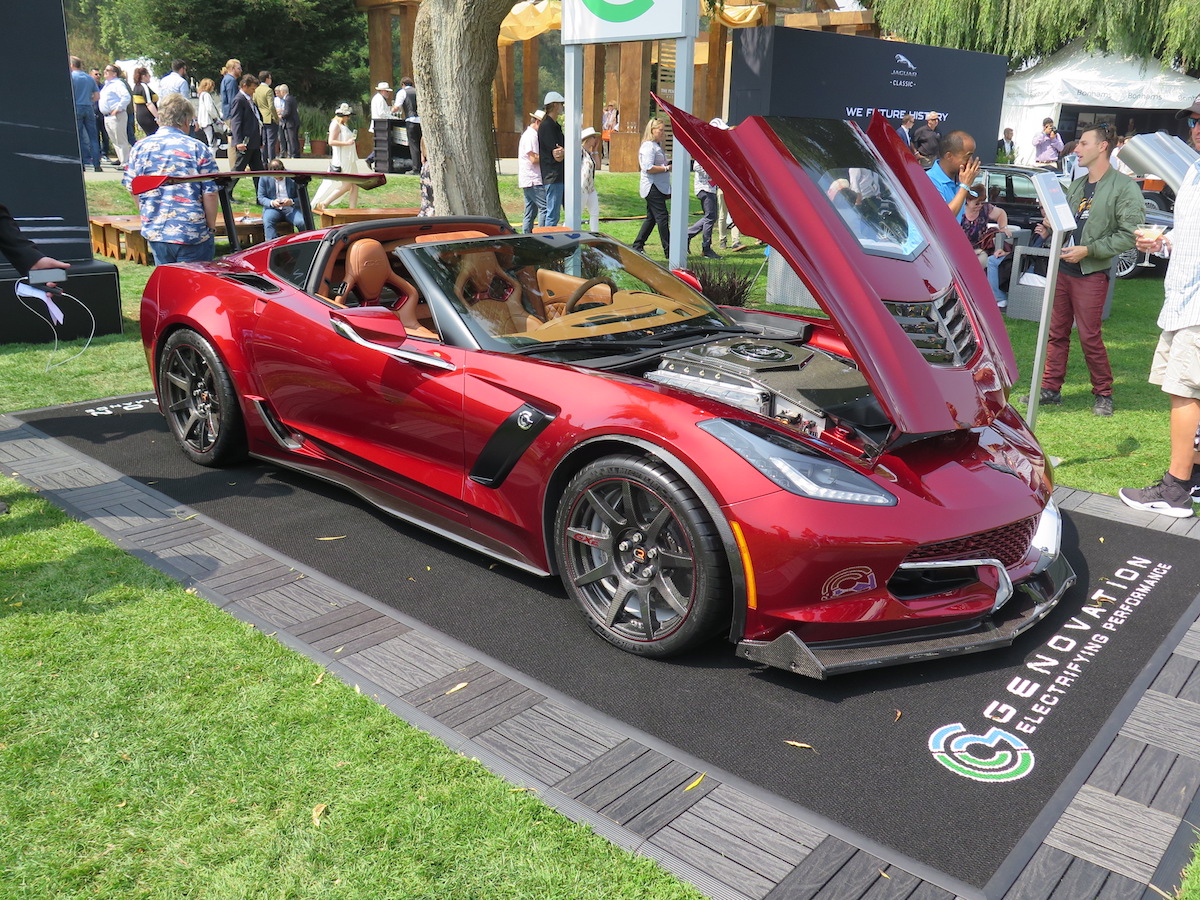
the ICE motor and replaces it with dual electric motors coupled to either a seven-speed manual transmission or an eight-speed automatic and rebrands the car as the Genovation GXE. With a 65 kWh battery good for 130 miles, the GXE has 800 hp, 700 lb.-ft. of torque, available from zero to redline for a top speed of 220 mph. The body is massaged aerodynamically with a new front and rear fascia, and well as underbody smoothing. The GXE is a real hairy-chested supercar in the American tradition, but 100 percent electric. A first-generation version of the GXE currently holds the world record for the top speed in an electric vehicle of 209 mph.
Jaguar
Jaguar recently introduced the I-Pace all-electric SUV with first deliveries coming up in the 4th quarter of 2018. It’s a very promising vehicle and the first of many BEV SUVs expected in the next two years.
At the 2018 Rolex Monterey Motorsports Reunion, Jaguar took a bone stock I-Pace onto the WeatherTech Laguna Seca racetrack and promptly set a new lap record for a stock production electric vehicle of 1:48:18. A Tesla Roadster established the previous BEV Laguna Seca record of 1:49:02, and a Model 3 turned in the fastest lap for a BEV sedan of 1:57:50.

Racing BEVs has been problematic for early Teslas with the cars going into limp mode because of overheating after a few laps, but the I-Pace ran into none of those issues. The I-Pace may be a turning point for BEVs, where battery overheating during performance track driving becomes much less of a concern.
Expect to see this record challenged as more and more BEVs become available with performance packages.
Jaguar also displayed their E-type Roadster electric conversion that will now be available from Jaguar Land Rover Classic Work. Rimac, a manufacturer of bespoke electric supercars, provides the propulsion and battery system. Two options are available, either a wholly re-manufactured E-type with the electric conversion or, for current owners of 1961 through 1975 E-Type Jags, a convertion to electric propulsion.
The conversion replaces the six-cylinder E-type ICE with a 295-hp electric motor powered by a 40 kWh battery, providing a range of about 170 miles. The battery, motor and electronics conversion fit where the original engine and gearbox were and makes the E-Type about 100 pounds lighter.
Mercedes-Benz
MB unveiled a concept show car at Pebble Beach, the EQ Silver Arrow. The single-seat EQ Silver Arrow pays homage to the successful record-breaking W-125 Mercedes land speed record car from 1937. That car set the public road land speed record of 268.9 mph in 1937 on the A5 autobahn, a record that stood until 2017. While this car will probably never see production, it is raising attention to Mercedes’ launch of its new BEV brand EQ on September 4th. Mercedes will announce its first fully electric SUV, the EQC. Expect this SUV to be equipped with a 400 hp electric motor system and a 70 kWh battery that will provide 0-60 MPH in under five seconds and have an estimated 310-mile range.

Polestar
A new electric performance brand from Volvo Car Group, Polestar, made its North American Debut at Pebble Beach. Its first vehicle, the Polestar 1, is a low-volume electric performance plug-in hybrid GT. Based on the Volvo S60 T8’s supercharged/turbocharged 2.0-liter engine with inline electric motor, the Polestar 1 adds two rear axle electric motors and a 34 kWh battery that gives 65 EPA-measured miles of pure electric range and a total of 600 hp and 738 lb.-ft. of torque. The body of the Polestar 1 is a combination of carbon fiber and aluminum. Polestar will produce only 1,500 Polestar 1s, with only 500 of them coming to the US. The Polestar 1 will sell for $150,000 (200 are already reserved) with deliveries starting spring 2019. The next two Polestar vehicles on the drawing boards will be full battery electric vehicles with more mainstream pricing.
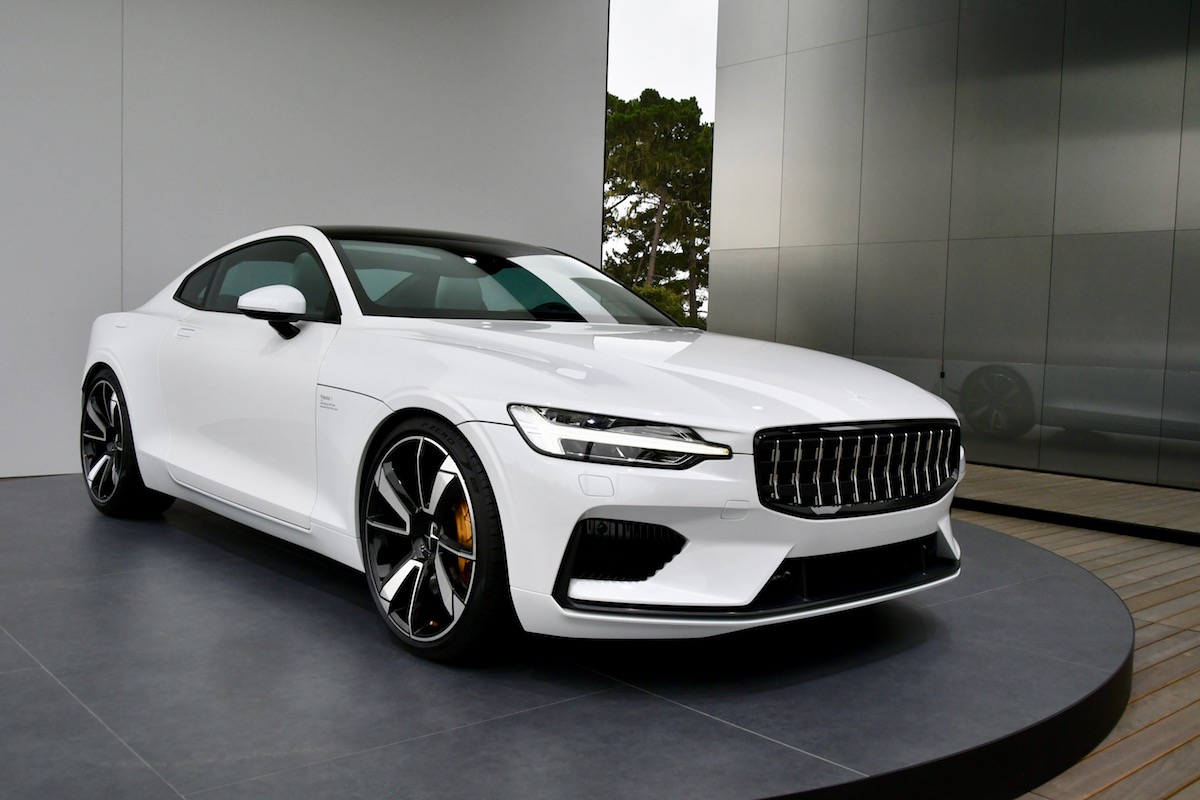
Porsche
The Porsche Taycan, previously known as the Mission E, made its North American debut at Pebble Beach. Porsche North America has started taking deposits for the four-door pure electric GT for delivery beginning in 2019. The dual-motor BEV is expected to have 600 hp and about 310 EPA miles of range. The Taycan has a modest (for BEV supercar standards) 0-60 mph acceleration of 3.5 seconds and 0-120 mph in 12 seconds. It features an 800-volt charging system that will add 250 miles of range in just 15 minutes. The Taycan is now in pilot production testing with over 100 vehicles worldwide.
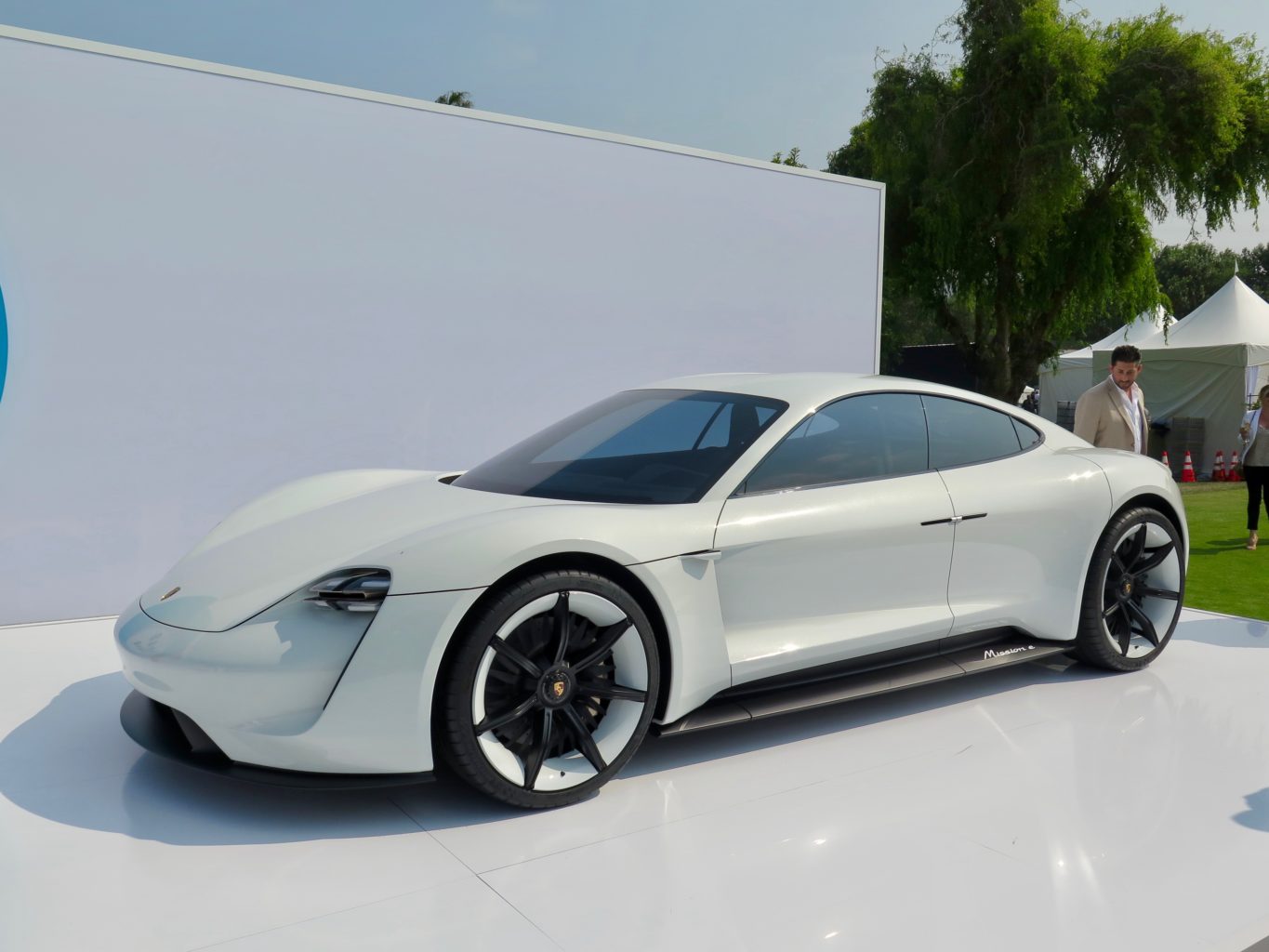
Rimac Automobili
Croatian BEV manufacturer Rimac sits at the top tiers in the rarified world of bespoke hyper-EVs. It also is one of the leading BEV engineering firms with a client roster reading like the who’s who of the BEV world. Rimac is an engineering partner to the likes of Aston Martin, Jaguar, Renault, Koenigsegg, Seat, Siemens and Brembo. Recently, Porsche/VW took a 10 percent ownership in Rimac, mainly for its BEV engineering expertise.
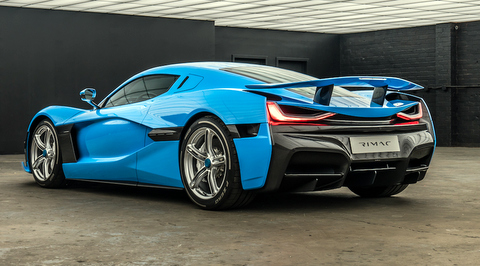
At Pebble Beach, Rimac announced its third Hyper-EV, the California Edition Rimac C_Two. The C_Two has four electric motors, one each driving the wheels and delivering 1,888 hp and 1,700 lb.-ft. of torque, giving it that ability to accelerate from 0-60 mph in 1.85 seconds with a top speed of 258 mph. With its 120 kWh battery, it’s good for 404 miles on a single charge if driven at the posted speed limits. Of course, the Rimac C_Two has all the latest ADAS and will be Level 4 autonomous capable. If this is the kind of car you are looking for, you better act fast, as only two examples are available, each costing north of $2 million.
Volkswagen
At Pebble Beach, Volkswagen showed off its next Atlas CUV, the Atlas Cross Sport. Based on The Volkswagen MQB architecture that has given us everything from the Golf and Tiguan to the three-row Atlas. The Atlas Cross Sport will be VWs first four-door PHEV/HEV crossover, borrowing the GTE PHEV technology from the Golf, but mating it with a 3.6-liter V6 FSI powerplant along with front and rear electric motors. The gas motor is good for 276 hp and 258 lb.-ft. of torque, combined with the front electric motor producing 53 hp/162 lb.-ft. of torque and the rear making 113 hp/199 lb.-ft. of torque, plus a six-speed DSG transmission and all-wheel drive. While the drivetrain is the same for the PHEV and the HEV, the PHEV adds an 18 kWh battery good for about 26 miles of electric-only driving, while the HEV version has only a 2 kWh battery good for just about 1.5 miles of range. Like the Golf GTE, there is a variety of driving modes. including performance, which utilizes the maximum power of all of the motors to produce a 0-60 mph at about five seconds. An “off-road†mode is also available.
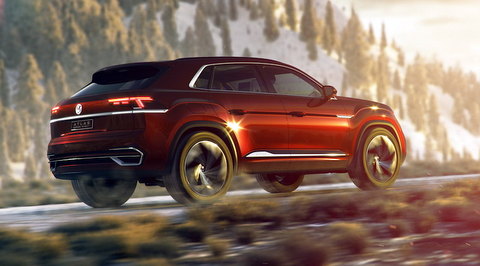
The Cross Sport has an impressive looking interior that is entirely digital. It will have all of the latest ADAS features combined with the innovative GTE technology. Built at VW’s Chattanooga, Tennessee plant, the Cross Sport will join the eight-passenger Atlas. Look for it in 2019.
Related Stories You Might Enjoy–Upcoming EVs
News: Volvo Electrification Progress-S60
News: Porsche Taycan Coming
News: Nissan’s Eight New EVs
News: Ford Does the Electric Slide
News: Jaguar I-Pace Revealed
News: Byton Introduces Electric SUV
News: BMW Electrification Push

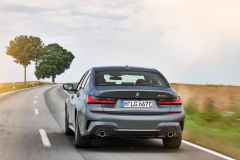
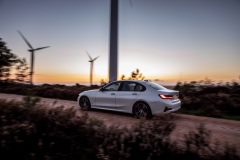
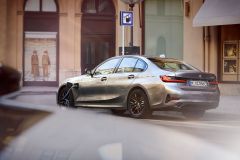

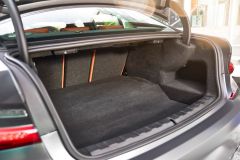

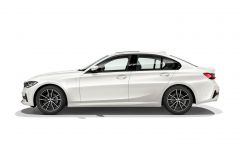
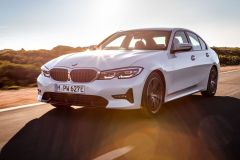
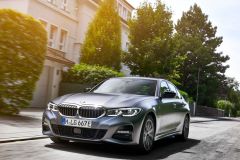
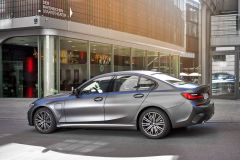
4 thoughts on “Event: 2018 Pebble Beach EV Recap”